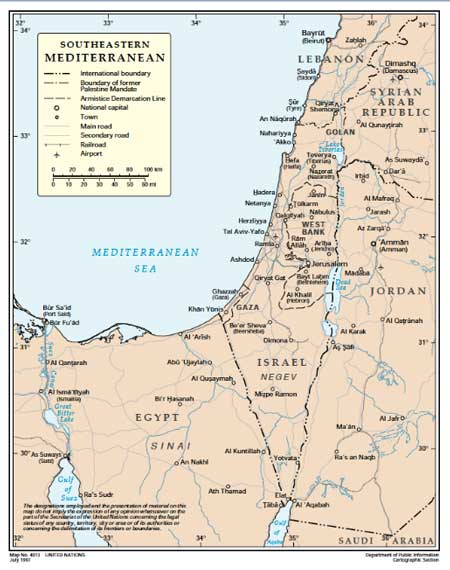Israel: « No Second Chance »
An Interview With Amos Harel
Amos Herel (Credit: www.haaretz.com)
12/09/2010 – During the Second Line of Defense Visit to Israel in November 2010, an article was published by Amos Harel of Haaretz, which caught our eye [1]. The article began with a focus on the testimony of outgoing director Military Intelligence Maj. General Amos Yadlin given to the Knessett’s Foreign Affairs and Defense Committee. In his testimony, General Yadlin warned that Israel would probably fight in its next major war on two or three fronts simultaneously.
As Amos Harel wrote, the change in the Israeli security situation is due in part to “the shift in the approach of Israel’s adversaries known in Arabic as mukawama (resistance, attrition) rather than an attempt to defeat the Israel Defense forces on the battlefield. Mukawama is grounded in technological developments. For instant, precision munitions are now readily available and relatively inexpensive and there is a better ability to locate and control large-scale missile launches. The threat to Israel’s entire territory has increased significantly in recent years and it’s safe to assume that the accuracy, range and destructive capability of the enemy’s weapons will continue to improve.”
“Mukawama is grounded in technological developments. For instant, precision munitions are now readily available and relatively inexpensive and there is a better ability to locate and control large-scale missile launches. The threat to Israel’s entire territory has increased significantly in recent years and it’s safe to assume that the accuracy, range and destructive capability of the enemy’s weapons will continue to improve.”
One of the suggestions of how to deal with this situation in the piece was a better use of the “maritime domain” to provide greater strategic depth for Israel. Here Amos Harel cited a recent article in the Institute for National Security Studies at Tel Aviv University’s journal Military and Strategic Affairs. In the article by Commodore First Class Gideon Raz, the author suggests:
“Air power is no longer sufficient in itself. The Israel Navy must transform the sea into part of the country’s strategic depth….Israel’s western flank (the sea) is the only open border, the Achilles’ heel of Israel’s enemies and the IDF’s great opportunity.”
During the visit we sat down to discuss with Amos Harel the article and, more generally, the evolving Israeli defense debate.
Credit: http://www.un.org/Depts/Cartographic/map/profile/semedite.pdf
SLD: Could you talk a little bit about the changing threats that really require a different approach?
Amos Harel: I think it took us some time to understand where we’re heading. We actually realized that after the Lebanon war in 2006. But it’s now very clear to everybody who follows what’s going on that it’s not going to be the same kind of battles anymore. The last real war we were involved in was 1973. You had Syrian tank divisions charging against Israeli tank divisions and the same happened in Sinai between the Egyptians and the Israelis. A conventional warfare is not going to take place in the near future. And I think that in the end, probably, most of our Arab enemies have realized that they’re not going to wipe Israel off the map of the Middle East. What they’re looking for is the idea which is called in Arabic “mukawama”or resistance. But it’s not resistance actually: it’s attrition. The goal is to make the Israelis pay and in the end, after some period of time, pressuring Israelis into any kind of concessions.
SLD: So, it’s a combination of the military technique of attrition, leveraging the fact that Israel is a democracy and will have to deal with the termination of the attrition somehow.
Amos Harel: Exactly. And it has a political goal also, i.e. to lead Israel to unilateral withdrawals, which already happened twice. It happened in southern Lebanon in 2000 and it happened with disengagement in 2005 in the Gaza Strip. Now one could claim, and personally, I feel that these were the right decisions at the time for both cases. But what the other side sees is Israel withdrawing under pressure.
SLD: So the perception of an outcome.
Amos Harel: Yes. Not army against army, but guerilla warfare, terrorist warfare and so on, where the target is Israeli civilian population. And the best way to handle this from their point of view, the easiest way, is rockets and missiles. It’s even better than suicide bombers. It’s true the suicide bombers cause you more pain. One suicide bomber can kill 20-25-30 people on the bus or in a restaurant. The way it happened seven or eight years ago. But it’s more complicated to send him on his way, to have him reach his target without Israeli intelligence, interfering and capturing him on the way or so on.
Now they’re getting better missile rockets. They’re getting missiles from many sources – Iranian made, Chinese made, Syrian made -, some of them pretty accurate. And if you look at the next five or six years, they will have more accurate weapons, more lethal weapons with longer-range missiles. Already now, Hezbollah has (according to the Israeli assessments) 45,000 rockets, and they can hit almost any point in Israel. In a few years time, they’ll probably manage to have GPS capability on their warheads, on rocketsthat will be able to strike at any point in Israel quite accurately.
[The military technique or attrition is] not army against army, but guerilla warfare, terrorist warfare and so on, where the target is Israeli civilian population. And the best way to handle this from their point of view, the easiest way, is rockets and missiles. It’s even better than suicide bombers. It’s true the suicide bombers cause you more pain. One suicide bomber can kill 20-25-30 people on the bus or in a restaurant. (…) Now they’re getting better missile rockets. They’re getting missiles from many sources – Iranian made, Chinese made, Syrian made -, some of them pretty accurate. And if you look at the next five or six years, they will have more accurate weapons, more lethal weapons with longer-range missiles. Already now, Hezbollah has (according to the Israeli assessments) 45,000 rockets, and they can hit almost any point in Israel.
SLD: Let’s just hover for a moment. One of the points that we’ve made on the Chinese challenge is precisely this one. The Chinese are building advanced capabilities in missiles. They will launch a GPS system, they’re putting it together. And this is enough to give them moves on the chessboard in the Middle East, because that is a compelling threat.One has to understand that this missile threat is changing in character, because it’s correlated with this political pressure strategy. Putting those two together, it makes a difference in just exporting missiles. Does that make sense to you?
Amos Harel: Yes it does. So what is our response? Traditionally, it was the Air Force. We strived to have the best Air Force in the Middle East, better-trained pilots, American equipment, American fighter planes and so on. And if you read carefully what Hezbollah thinkers are writing, Iranians and so on, you understand their game plan; it’s not very complicated to grasp it. Apart from hitting Israeli civilians, which is their main target, they will go for Israeli Air Force bases. And it will be very, very difficult for the Air Force to function with such a bombardment. Hezbollah is talking of shooting 1,000 rockets a day. Now, if it was only against the state, it may not be such a big deal, but against airfields that is another question.
"Israeli Air Force Bases will become the main target of the Hezbollah" Credit photo: Siegi, Israel Air Force, Sikorsky S-70A-50 Yanshuf 830, Tel Aviv - Sde Dov (SDV / LLSD), Israel 12 May, 2010
SLD: So in part this is the stimulus to thinking about using the sea as a strategic reserve?
Amos Harel: Exactly. It’s more difficult to hit ships, and we could use the ships to target and to attack targets in Lebanon or in Gaza. Now naturally, the Air Force doesn’t like it. And the Air Force traditionally has much more influence over decision makers than anybody else. They think better, they’re more organized, they are more persuasive when they present their argument, and so on. Behind the scenes, there’s now a sort of emerging battle, a bureaucracy battle between the Air Force and others, especially the Navy saying: listen, we have to think of it a bit differently, it’s not only a question of budget, it’s a question of theory- of capability and where you’re going to be able to operate against the threats. And personally, you might think that the F-35 is a good idea. But talking with the ground forces, at least some of the generals felt that this is not where the money should be spent, but they’ve lost this battle completely.
SLD: As we talk about it, I think there’s a potential here for the F-35 to provide synergy. This whole concept of extending this space in maritime terms is probably an excellent idea, and the F-35 could acdtually be a facilitator for this.
Amos Harel: We do not yet have a plan to deal with the new threats. There are ideas, there are changes that have been made; most of them after the war and after the chief of staff resigned, and a new one came in as his successor. What Chief of Staff Lieutenant General Gabi Ashkenazi did more than anything else was to go back to the basics. Get back to training, get back to making sure that the soldiers get the right equipment and so on. But thinking ahead is a different issue. And then, at least some of it will have to be left to the next chief of staff, who is going to come into office by February of next year.
[Thinking ahead] will have to be left to the next chief of staff, who is going to come into office by February of next year.
SLD: I’m not sure you can have a single plan, because it depends on whether we’re talking about Lebanon, or whether we’re talking Syria.
Amos Harel: Or Iran or Gaza …
SLD: Or Iran or Iranian held territory in Iraq, which is conceivable. Having maritime capability may be at least part of how you can get that answer, so you can actually go to where the threat is coming from. So that your answer really is: “no matter where you’re going to launch your missiles from, I can reach it”.
Amos Harel: The paradox with Israel is I think that we’re facing a wide spectrum of threats, while in the end, our capabilities are very limited, because of the questions of budget, because there are only 7 million people here, and it’s a tiny country. And you need to make the decisions fast, and there’s no second chance here.
———-
Footnote:
[1] Herel, Amos, By Land, Air and Also by Sea, Haaretz, November 5, 2010



